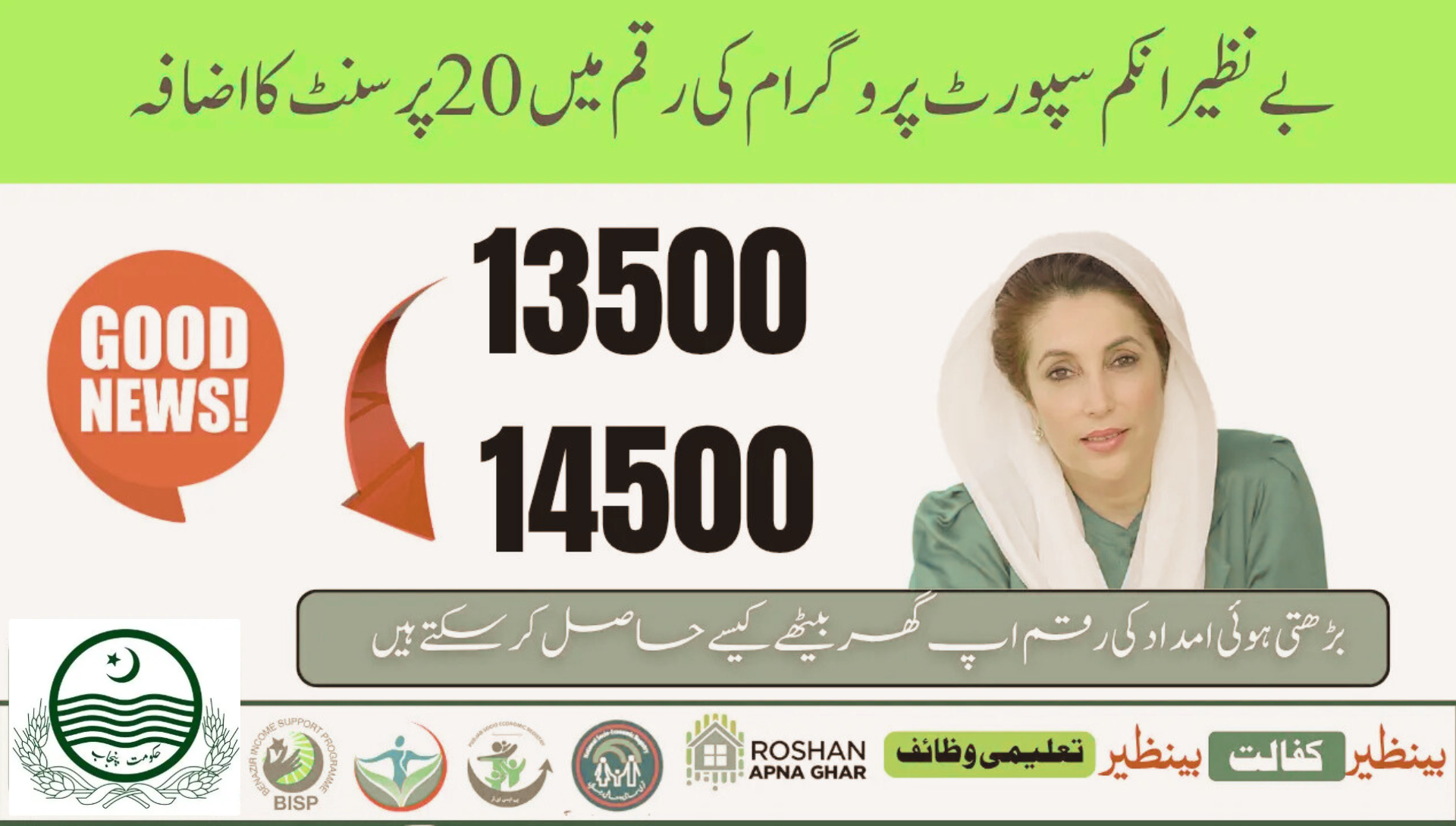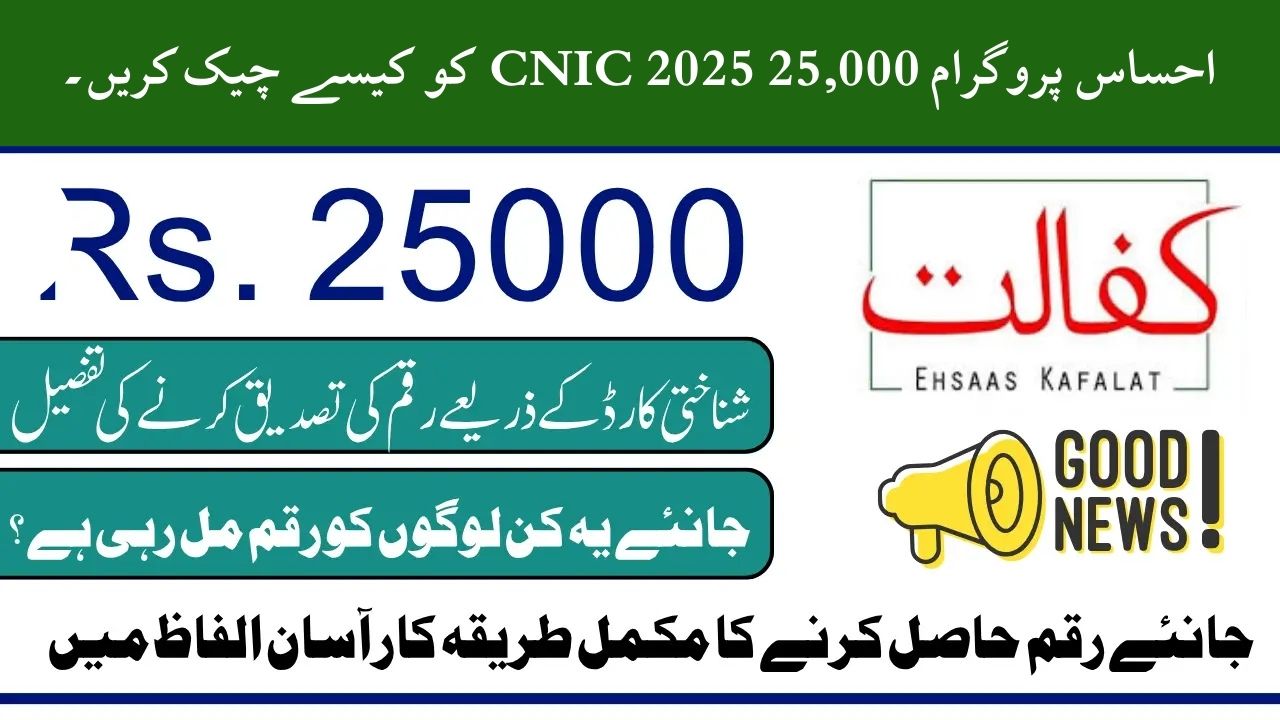BISP Poverty Score 2025 – How It Affects Eligibility & Payment Approvals. The Benazir Income Support Programme (BISP) is Pakistan’s largest social protection scheme, providing cash assistance to millions of families living below the poverty line. For these households, the monthly payment helps cover food, education, healthcare, and basic living expenses.
But not everyone can qualify for BISP support. The key factor that decides who receives assistance and who doesn’t is the BISP Poverty Score. This score is the foundation of the eligibility system and plays a major role in whether payments are approved or stopped.
What Is the BISP Poverty Score?
The poverty score is a number between 0 and 100 that represents the economic condition of a household. It is calculated using a special survey called the Proxy Means Test (PMT).
Instead of asking families for salary slips or bank statements—which are hard to prove in Pakistan’s rural and informal economy—the PMT checks household conditions, such as:
- Family size and dependents
- Type of house (katcha, semi-pucca, pucca)
- Number of rooms
- Toilet and water facilities
- Ownership of land, livestock, or vehicles
- Education level of family members
- Household items such as TV, fridge, or motorbike
Each answer adds or reduces points. A low score poorer household, while a higher score = better off household. BISP uses this score to decide who deserves financial support.
How Is the Poverty Score Calculated?
The score comes from data collected in the National Socio-Economic Registry (NSER). During surveys, families provide details of their living conditions. Based on their responses:
- Few assets → lower score
- More dependents → lower score
- Owning property or vehicles → higher score
- Poor housing conditions → lower score
This system ensures fairness and reduces chances of favoritism.
Poverty Score Cutoff in 2025
The cutoff score is the most important factor for eligibility:
- Traditionally, the cutoff was 16.17. Families below this score qualified.
- Later, the Ehsaas Kafalat Program increased the threshold to 32 or even 40, especially for widows, orphans, and persons with disabilities.
This flexible cutoff allows more vulnerable families to be included during inflation, natural disasters, or national emergencies.
Why the Poverty Score Matters for Payment Approvals
The poverty score is directly linked to your payment status:
| Poverty Score | Eligibility Result |
|---|---|
| Below cutoff (e.g., ≤16.17 or ≤32) | Eligible, payments approved |
| Above cutoff | Not eligible, payments stopped |
| Score updated and lower | Payments may restart |
| Score updated and higher | Payments may be blocked |
This means that your score decides whether you remain on the active beneficiary list or lose payments.
Role of NSER in Poverty Score
The NSER database is updated regularly through household surveys. If your family data is outdated, your poverty score may not show your real situation.
For example:
- A new child is born but not added → score remains high
- A family member dies but still listed → score remains high
- Household income decreases but not updated → ineligible status
- Address changes not recorded → delays in payments
By updating NSER details at BISP Tehsil Offices, families can ensure their score reflects their actual living conditions.
Real-Life Examples
- Shazia’s Case – A widow living in a katcha house with three children scored 12, which made her eligible. Her stipend helps buy food and pay school fees.
- Imran’s Case – A daily wage worker owning a semi-pucca house and a motorbike scored 27. Initially ineligible, but once the threshold expanded to 32, he qualified for assistance.
These stories show how even a few points in the poverty score can change a family’s life.
Tips to Stay Eligible for BISP Payments
- Update NSER data regularly – Add new children, report deaths, and update relocations.
- Renew CNICs on time – Payments stop if CNICs expire.
- Check eligibility through 8171 SMS – Send CNIC to 8171 to confirm status.
- Keep documents ready – CNIC, B-forms, and household details may be required.
- Avoid fraud – Updates are free at official centres; never pay agents.
Frequently Asked Questions (FAQs)
Q1. How do I check my poverty score?
Send your CNIC number to 8171 via SMS. The system replies with your eligibility status.
Q2. Can I improve my poverty score?
You cannot manipulate it. However, if your financial condition worsens, updating NSER data may lower your score.
Q3. Why did my payments stop even though I was receiving them?
This usually happens after a score review. If your score rises above the cutoff or if your CNIC expired, payments are blocked.
Q4. What if my score is high but I am still struggling?
BISP works on fixed cutoffs. However, new programs sometimes expand eligibility thresholds to cover more families.
Why the Poverty Score System Works
While not perfect, the poverty score system is the most reliable way to identify deserving families. It:
- Prevents favoritism and corruption
- Targets funds toward the poorest households
- Allows expansion during crises
- Ensures transparency and fairness
Independent reports confirm that using poverty scores has improved aid distribution and reduced extreme poverty across Pakistan.
Final Thoughts
The BISP Poverty Score 2025 is the backbone of Pakistan’s welfare system. It determines whether your payments are approved, blocked, or restarted. Families with lower scores are prioritized, while those with higher scores must wait for threshold changes or update their records.



















